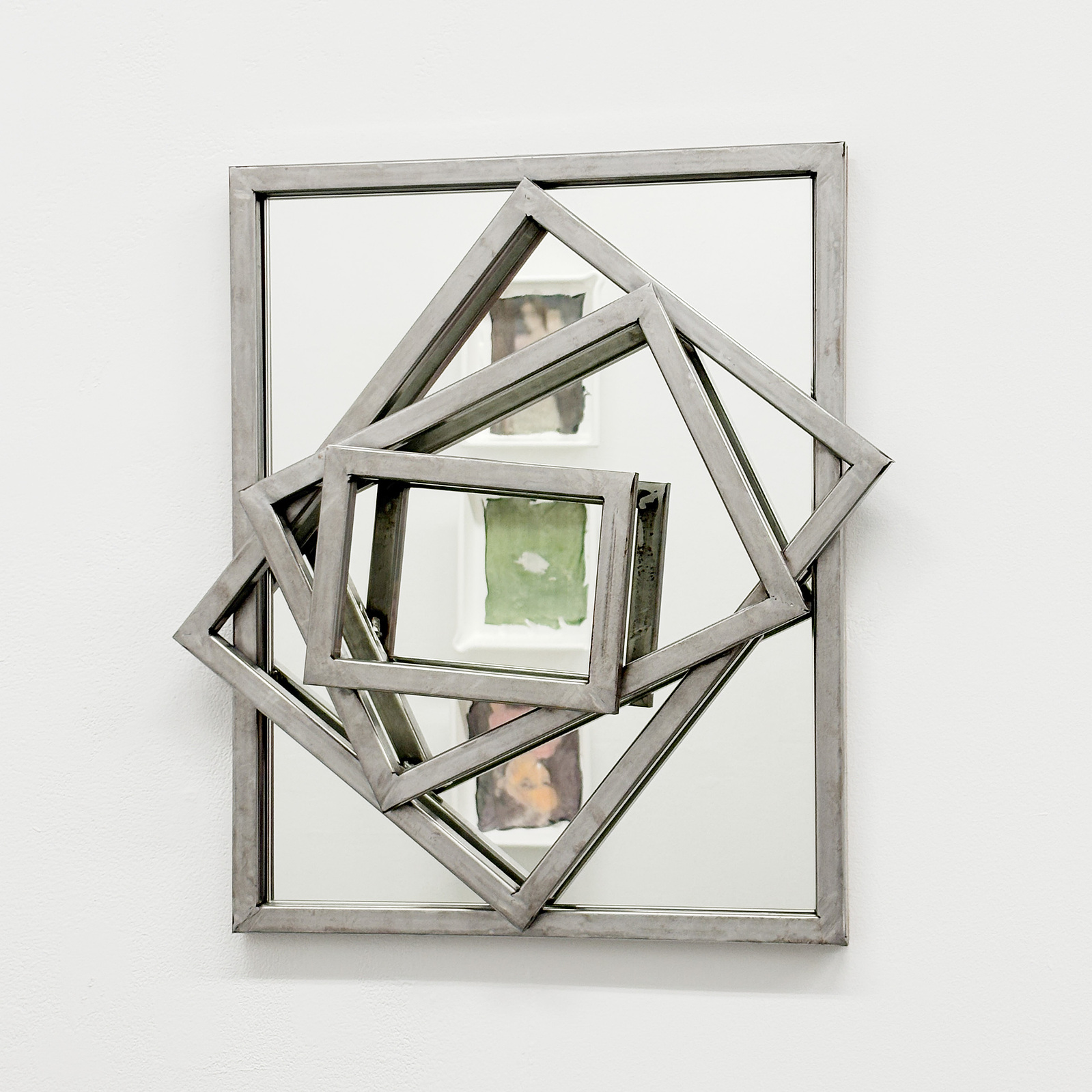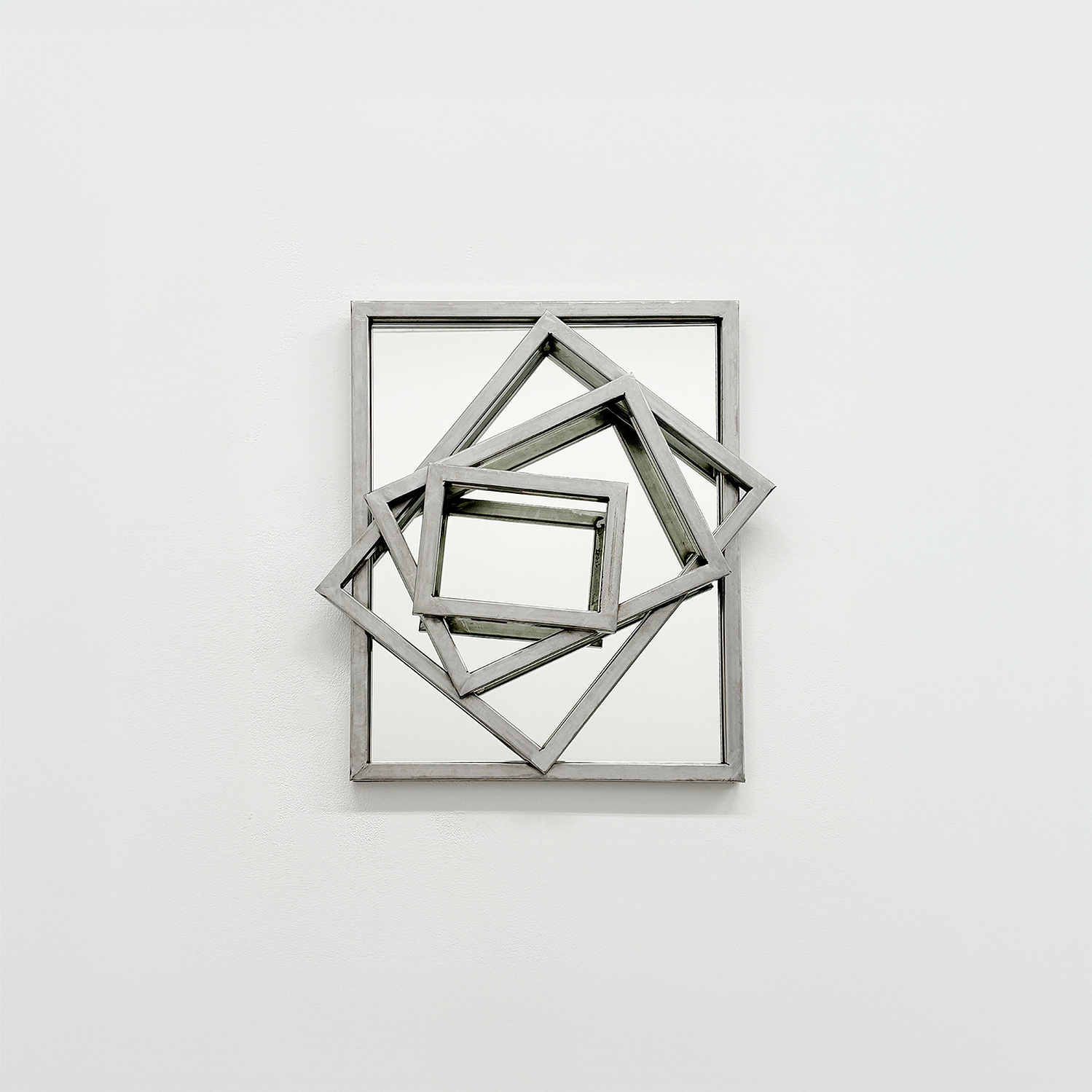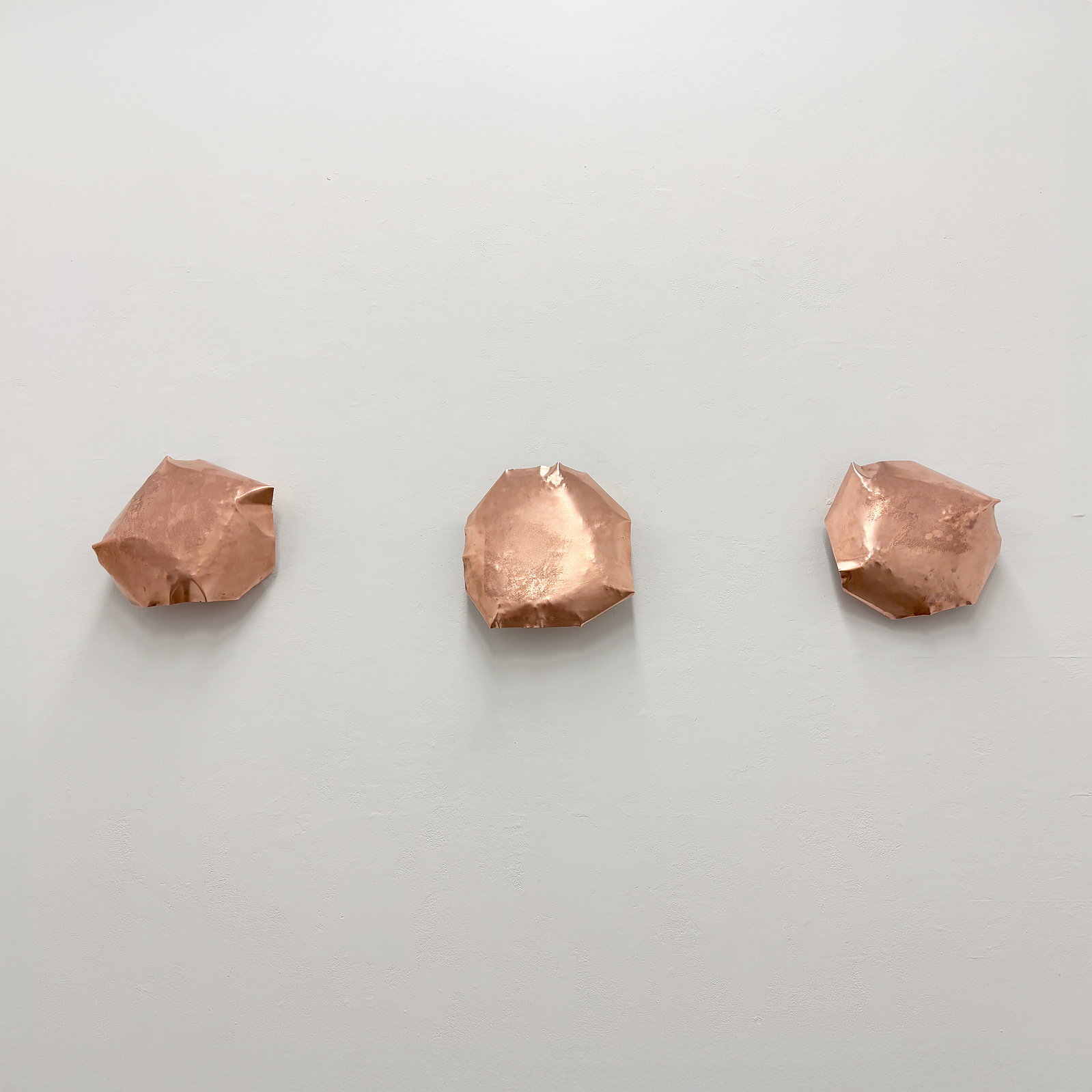
Metadata Bath, 2025. Polypropylene, acrylic medium, digital images.

A Mirror That Forgets, A Frame That Spirals, 2025.

A Mirror That Forgets, A Frame That Spirals, 2025. Welded steel, mirror, wood, screws.

Coppered Echoes of the Digital, 2025. Copper, acid.
A Mirror That Forgets, A Frame that Spirals
2025.
Across these works, I investigate the conditions under which meaning emerges, dissolves, and reconfigures. In a world shaped by metadata, algorithms, and institutional structures, my practice asks: What does it mean to see, and who controls the conditions of sight?
My work examines the act of looking at images—how they are shaped by and in turn shape perception, institutional framing, and the conditions of their circulation. Through sculptural interventions and photographic processes, I explore how images mediate our understanding of the self and the world.
Central to this inquiry is an interest in how visual culture conditions not only what becomes visible, but how meaning is formed and felt through images. I focus on the ontological instability of photographs and digital objects—how they fragment, circulate, and become detached from their origins, while continuing to structure relationships to memory, identity, and representation.
While phenomenology anchors this research in embodied perception, my practice extends beyond the immediacy of vision to examine how images acquire ontological status within technical and institutional systems. Drawing on Merleau-Ponty, Heidegger, Gilbert Simondon, and Yuk Hui, I trace how images degrade, individuate, and operate within broader structures of mediation. Media theory further contextualizes this instability, revealing how visibility is governed by frameworks of circulation, power, and algorithmic control.
To interrogate these dynamics, I employ sculptural and photographic strategies that unsettle the perceived neutrality of the frame. One work features a welded steel spiral of picture frames suspended before a mirror, collapsing conventions of display into recursive distortion. Referencing Rorschach tests and institutional architecture, the structure implicates the viewer, revealing how framing conditions both perception and position.
In another series, pixelated self-portraits—degraded through digital transmission—are transferred onto darkroom trays. These re-materialized fragments reclaim presence by anchoring ephemeral data within the tactile history of photographic process. Acting as both vessels and sites of erosion, the trays hold identity and visibility in a state of flux.
A final body of work involves etching digital images of water and clouds onto copper plates, then hammering them into imperfect convex forms. The resulting surfaces resist legibility, emphasizing the tension between material permanence and visual instability. Pressing outward, the images refuse containment, while the copper recalls both early photographic processes and archival weight. Here, the digital is not simply translated—it is strained, warped, and made to bear the memory of its own transformation.
This body of work received the Verant Richards Award and will be exhibited in the vitrines at Gallery 44 from February to March 2026.